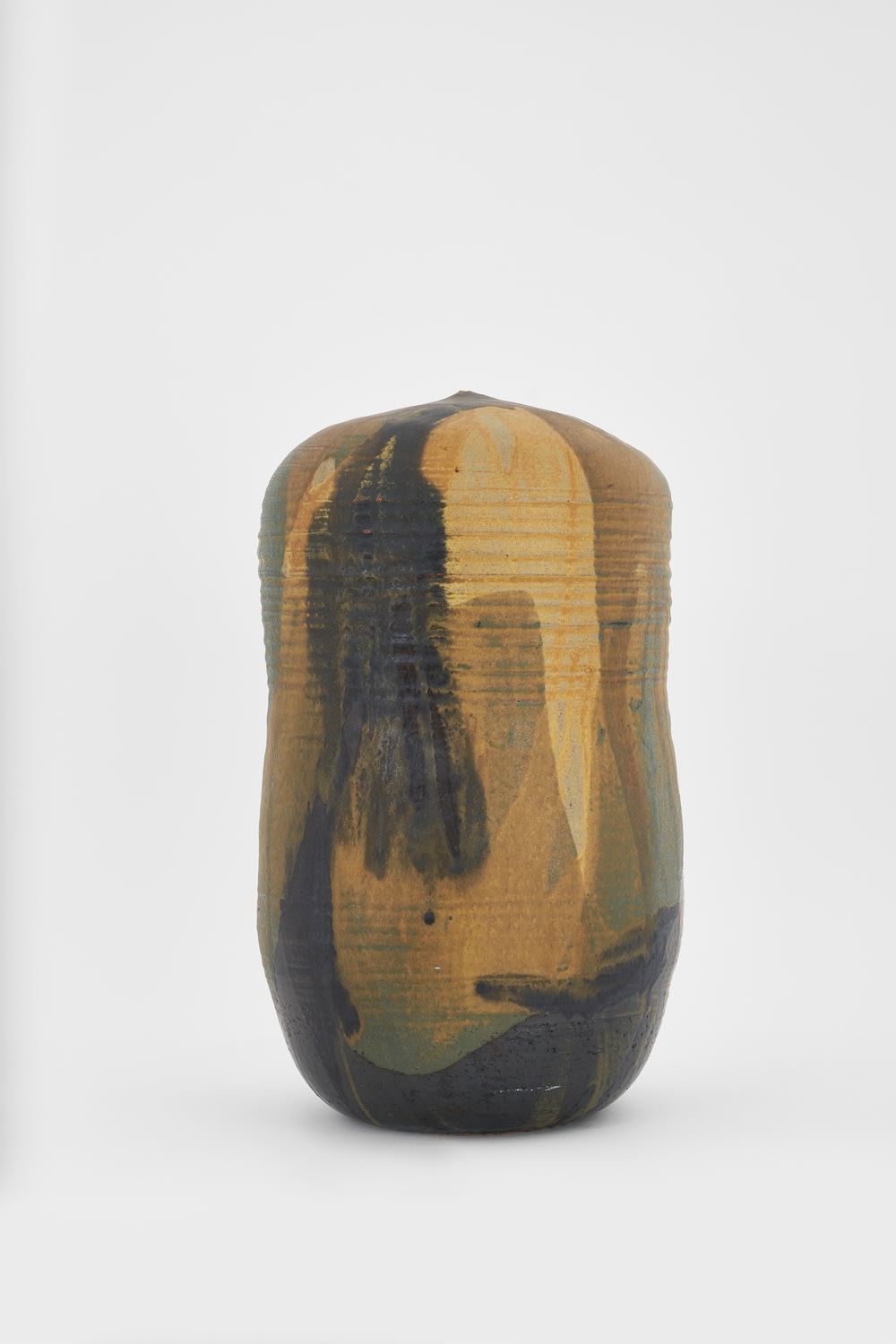-
Artworks





Untitled, ca. 1980s-90s
Glazed stoneware23 x 13 x 13 in
58.4 x 33 x 33 cmFurther images
Takaezu began working towards the closed form in the 1950s, experimenting with enclosing the interior volume of her vessels and leaving a small opening that allowed for gas to escape...Takaezu began working towards the closed form in the 1950s, experimenting with enclosing the interior volume of her vessels and leaving a small opening that allowed for gas to escape during firing. The act of closure rendered the vessels functionless, suggesting that they now inhabited the realm of sculpture. She continued to produce these forms well into the 1990s and 2000s, eventually at monumental scale. Her closed forms, which were masterfully thrown on the wheel, range from as small as 4 inches and to larger forms nearing 68 inches high.
Takaezu’s format allowed her to explore a wide range of surface effects: layering, veiling, and expressionist gestures in her application of glazes. She added glaze onto the clay with a brush while also occasionally, in a controlled manner, dipping and pouring glaze to create dynamic surfaces. Her palette often references colors seen in nature – particularly from her native Hawaii – like ochre, black, white, brown, soft grays and varying shades of blue.
Takaezu’s aesthetic approach was influenced by Abstract Expressionism and the traditions of East Asia, including ink painting and the Japanese tea ceremony. Never concerned with perfect symmetry, Takaezu embraced irregularity as with the 25-inch high work "Untitled", made between the 1980s and 90s. It is synched at the middle point, with heavy-handed drips and applications of tan, green, ochre and dark glaze enveloping the surface of the vessel.Exhibitions
Toshiko Takaezu: Interplay, James Cohan, New York, March 20 - April 20, 2024
Lenore Tawney & Toshiko Takaezu: A Remarkable Friendship, Alison Jacques Gallery, London, United Kingdom, 15 November – 21 December 2024









